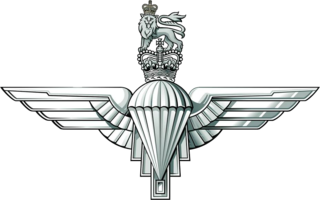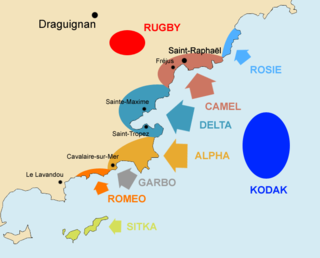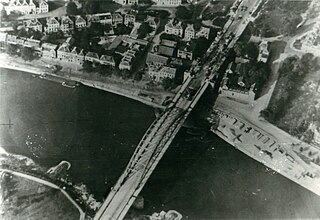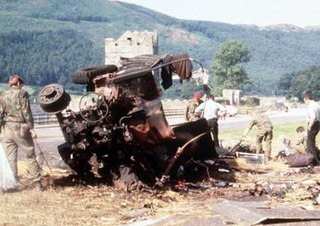 W
WThe Parachute Regiment, colloquially known as the Paras, is an airborne infantry regiment of the British Army. The first battalion is part of the Special Forces Support Group under the operational command of the Director Special Forces. The other battalions are the parachute infantry component of the British Army's rapid response formation, 16 Air Assault Brigade. The Paras, along with the Guards, are the only line infantry regiment of the British Army that has not been amalgamated with another unit since the end of the Second World War.
 W
WThe World War II British airborne forces consisted of the Parachute Regiment, the Glider Pilot Regiment, the airlanding battalions and from 1944 the Special Air Service Brigade. Their formation followed the success of the German airborne operations, during the Battle of France. The British Prime Minister, Winston Churchill, directed the War Office to investigate the possibility of creating a corps of 5,000 parachute troops.
 W
WThe 1st Parachute Brigade was an airborne forces brigade formed by the British Army during the Second World War. As its name indicates, the unit was the first parachute infantry brigade formation in the British Army.
 W
WThe 2nd Parachute Brigade was an airborne forces brigade formed by the British Army during the Second World War.
 W
WThe British 2nd Parachute Brigade was part of the Operation Rugby airborne landings in August 1944. The operation was carried out by an ad hoc airborne formation called the 1st Airborne Task Force. Operation Rugby was itself part of the Operation Dragoon invasion of Southern France by the American 7th Army. The airborne task force landed in the River Argens valley with the objective of preventing German reinforcements from reaching the landing beaches. The landings were mainly an American operation and the brigade was the only British Army formation involved.
 W
WThe 3rd Parachute Brigade was an airborne forces brigade raised by the British Army during the Second World War. The brigade was initially part of the 1st Airborne Division, but remained in Britain when that division was sent overseas, and became part of the 6th Airborne Division, alongside 5th Parachute Brigade and 6th Airlanding Brigade.
 W
WThe 4th Parachute Brigade was an airborne, specifically a parachute infantry, brigade formation of the British Army during the Second World War. Formed in late 1942 in the Mediterranean and Middle East, the brigade was composed of three parachute infantry units, the 10th, 11th and 156th Parachute Battalions.
 W
WThe 5th Parachute Brigade was an airborne forces formation of brigade strength, raised by the British Army during the Second World War. Created during 1943, the brigade was assigned to the 6th Airborne Division, serving alongside the 3rd Parachute Brigade and the 6th Airlanding Brigade.
 W
WThe Battle of Arnhem was a battle of the Second World War at the vanguard of the Allied Operation Market Garden. It was fought in and around the Dutch towns of Arnhem, Oosterbeek, Wolfheze and Driel and the vicinity from 17 to 26 September 1944.
 W
WOperation Barras was a British Army operation that took place in Sierra Leone on 10 September 2000, during the late stages of the nation's civil war. The operation aimed to release five British soldiers of the Royal Irish Regiment and their Sierra Leone Army (SLA) liaison officer, who were being held by a militia group known as the "West Side Boys". The soldiers were part of a patrol that was returning from a visit to Jordanian peacekeepers attached to the United Nations Mission in Sierra Leone (UNAMSIL) at Masiaka on 25 August 2000 when they turned off the main road and down a track towards the village of Magbeni. There the patrol of twelve men was overwhelmed by a large number of heavily armed rebels, taken prisoner, and transported to Gberi Bana on the opposite side of Rokel Creek.
 W
WThe Battle of Majar al-Kabir was the result of a growing distrust between the British military and the local people of the south-eastern region of Iraq over house searches and confiscation of personal weapons that locals felt were crucial for their self-protection. Despite a signed agreement between local people and British forces stating that the British would not enter the town, the 1st Battalion Parachute Regiment started patrolling in the town of Majar al-Kabir on 24 June 2003 the day after the agreement was signed by both sides. The British thought the agreement was to stop the weapons searches that involved going into the houses of local inhabitants.
 W
WThe Battle of Wireless Ridge was an engagement of the Falklands War which took place on the night from 13 to 14 June 1982, between British and Argentine forces during the advance towards the Argentine-occupied capital of the Falkland Islands, Port Stanley.
 W
WBloody Sunday, or the Bogside Massacre, was a massacre on 30 January 1972 in the Bogside area of Derry, Northern Ireland, when British soldiers shot 26 civilians during a protest march against internment without trial. Fourteen people died: 13 were killed outright, while the death of another man four months later was attributed to his injuries. Many of the victims were shot while fleeing from the soldiers, and some were shot while trying to help the wounded. Other protesters were injured by shrapnel, rubber bullets, or batons, and two were run down by army vehicles. All of those shot were Catholics. The march had been organised by the Northern Ireland Civil Rights Association (NICRA). The soldiers were from the 1st Battalion, Parachute Regiment, the same regiment implicated in the Ballymurphy massacre several months prior.
 W
WThe Battle of Bréville was fought by the British 6th Airborne Division and the German 346th Infantry Division, between 8 and 13 June 1944, during the early phases of the invasion of Normandy in the Second World War.
 W
WThe British airborne operations in North Africa were conducted by British paratroopers of the 1st Parachute Brigade, commanded by Brigadier Edwin Flavell, as part of the Tunisian Campaign of World War II, over the period between November 1942 and April 1943.
 W
WThe 1992 Coalisland riots were a series of clashes on 12 and 17 May 1992 between local Irish nationalist civilians and British Army soldiers in the town of Coalisland, County Tyrone, Northern Ireland. The Third Battalion 1992 tour's codename was "Operation Gypsy".
 W
WOperation Deadstick was the codename for an operation by airborne forces of the British Army that took place in the early hours of 6 June 1944 as part of the Normandy landings of the Second World War. The objective was to capture intact two road bridges in Normandy across the River Orne and the Caen Canal, providing the only exit eastwards for British forces from their landing on Sword Beach. Intelligence reports said both bridges were heavily defended by the Germans and wired for demolition. Once captured, the bridges had to be held against any counter-attack, until the assault force was relieved by commandos and other infantry advancing from the landing beach.
 W
WOperation Fustian was an airborne forces operation undertaken during the Allied invasion of Sicily in July 1943 in the Second World War. The operation was carried out by Brigadier Gerald Lathbury's 1st Parachute Brigade, part of the British 1st Airborne Division. Their objective was the Primosole Bridge across the Simeto River. The intention was for the brigade, with glider-borne forces in support, to land on both sides of the river. They would then capture the bridge and secure the surrounding area until relieved by the advance of British XIII Corps, which had landed on the south eastern coast three days previously. Because the bridge was the only crossing on the river and would give the British Eighth Army access to the Catania plain, its capture was expected to speed the advance and lead to the defeat of the Axis forces in Sicily.
 W
WThe Battle of Goose Green was an engagement between British and Argentine forces on 28 and 29 May 1982 during the Falklands War. Located on East Falkland's central isthmus, the settlement of Goose Green was the site of an airfield. Argentine forces were in a well-defended position, within striking distance of San Carlos Water, where the British task force had made its amphibious landing.
 W
WOperation Hasty was a mission behind German lines in Italy, during the Second World War. The operation was carried out in June 1944, by a small force of 60 men drawn from the 2nd Independent Parachute Brigade.
 W
WOperation Manna was the codeword for a Second World War operation by the British and Greek forces in Greece in mid-October 1944, following the gradual withdrawal of the German occupying forces from the country.
 W
WOperation Market Garden was an unsuccessful World War II military operation fought in the Netherlands from 17 to 25 September 1944. It was the brainchild of Field Marshal Montgomery and strongly supported by Winston Churchill and Franklin Roosevelt. The airborne operation was undertaken by the First Allied Airborne Army with the land operation by XXX Corps of the British Second Army. The objective was to create a 64 mi (103 km) salient into German territory with a bridgehead over the River Rhine, creating an Allied invasion route into northern Germany. This was to be achieved by seizing a series of nine bridges with airborne forces with land forces swiftly following over the bridges. The operation succeeded in liberating the Dutch cities of Eindhoven and Nijmegen along with many towns, creating a 60 mi (97 km) salient into German-held territory limiting V-2 rocket launching sites. It failed, however, to secure a bridgehead over the Rhine, with the advance being halted at the river.
 W
WThe maroon beret in a military configuration has been an international symbol of airborne forces since the Second World War. It was first officially introduced by the British Army in 1942, at the direction of Major-General Frederick "Boy" Browning, commander of the British 1st Airborne Division. It was first worn by the Parachute Regiment in action in North Africa during November 1942. Although coloured maroon, the beret of the British Parachute Regiment is often called the "red beret."
 W
WThe Battle of Merville Gun Battery occurred on 6 June 1944, as part of Operation Tonga, part of the Normandy landings, during the Second World War. Allied intelligence believed the Merville Gun Battery was composed of heavy-calibre guns that could threaten the British landings at Sword Beach, only 8 miles (13 km) away.
 W
WThe Battle of Mount Longdon, on 11–12 June 1982 near the end of the Falklands War, was fought between the British Third Battalion, of the Parachute Regiment and elements of the Argentine 7th Infantry Regiment, one of three engagements in a Brigade-size operation that night, along with the Battle of Mount Harriet and the Battle of Two Sisters. A mixture of hand-to-hand fighting and ranged combat resulted in the British occupying this key position around the Argentine garrison at Port Stanley.
 W
WThe Parachute Regiment and Airborne Forces Museum is based at Duxford in Cambridgeshire and tells the story of the Parachute Regiment and other airborne forces.
The British Armed Forces award a range of Parachutist Badges to those qualified as military parachutists. The version awarded depends largely on the unit or role that the individual fills following qualification.
 W
WThe Paras is a 1983 BBC TV documentary series about British Parachute Regiment recruits of 480 (Training) Platoon undertaking their basic training at the Depot of the Parachute Regiment at Aldershot Garrison between January and June 1982.
 W
WThe RAF Falcons are a British military parachute display team. They perform their colourful aerial display at venues nationwide and are renowned for their 11-person non-contact canopy stack display routine.
 W
WThe Red Devils are the Parachute Regiment's parachute display team. The team wears the distinctive maroon beret. The Red Devils are regular serving paratroopers from the four battalions of the Parachute Regiment who have volunteered to serve on the display team.
 W
WOperation Slapstick was the code name for a British landing from the sea at the Italian port of Taranto during the Second World War. The operation, one of three landings during the Allied invasion of Italy in September 1943, was undertaken by airborne troops of the British 1st Airborne Division, commanded by Major-General George Hopkinson.
 W
WThe Warrenpoint ambush, also known as the Narrow Water ambush, the Warrenpoint massacre or the Narrow Water massacre, was a successful guerrilla attack by the Provisional Irish Republican Army (IRA) on 27 August 1979. The IRA's South Armagh Brigade ambushed a British Army convoy with two large roadside bombs at Narrow Water Castle outside Warrenpoint, Northern Ireland. The first bomb was aimed at the convoy itself, and the second targeted the incoming reinforcements and the incident command point (ICP) set up to deal with the incident. IRA volunteers hidden in nearby woodland also allegedly fired on the troops, who returned fire. The castle is on the banks of the Newry River, which marks the border between Northern Ireland and the Republic of Ireland.